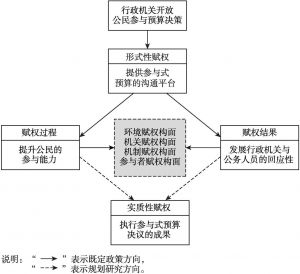论文
审议式公民参与的公共赋权:台湾桃园市参与式预算的公民创新
摘要
为了解决当代自由民主体制的问题,实务者及研究者强化授权性的参与机制,透过具备直接民主精神的公民参与,来提升公共资源分配的分配正义,参与式预算就是其中的积极手段之一。为了提升行政机关以及公务人员推动参与式预算业务的能力与意愿,公共赋权是将参与式预算的决议制度化,并实际产生政策影响的关键。本文以桃园市行政部门作为公民创新的个案研究场域,探讨地方行政机关以及公务人员推动参与式预算的赋权过程与赋权结果的动态发展。研究发现从2015年起,台湾桃园市运用行政机关的特定用途预算作为参与式预算的议题,且采用委外模式交由民间团体推动。在赋权过程部分,桃园市行政部门针对青年、市民、公务人员进行系统性的培力课程,提升沟通、审议、方案规划、投票的能力;在赋权结果部分,多数的预算方案并不符合参与式预算的要件,仅是参与式规划。因此,台湾桃园市推动参与式预算的公共赋权尚在雏形,由形式性赋权转化为实质性赋权的成效,主要取决于行政首长、行政机关与公务人员的态度意愿、能力培养以及制度设计。
作者
检索正文关键字
论文目录
- 一 前言
- 二 文献分析
- 三 研究设计与分析架构
-
四 个案研究
- (一)环境赋权构面
- (二)机关赋权构面
- (三)机制赋权构面
- (四)参与者赋权构面
- 五 结语
查看更多>>>


